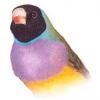-
Posts
5,969 -
Joined
-
Last visited
-
Days Won
3
Content Type
Profiles
Forums
Gallery
Everything posted by Gouldian
-
Hi guys, If you are lover of Alsace wine, you would have heard about Hugel & Fils. Etienne Hugel is currently in town and have organized a wine dinner @ Cherry Garden, Mandarin Oriental this Saturday, 15/01/01 7pm for $138++ per pax - 6 course with 6 wines. Menu Beside Etienne Hugel, famous Japanese Supermodel - Moe Oshikiri will also be present. See you there... Please call Cherry Garden for reservation if you are keen. Source: http://blog.hugel.com/en/2011/01/with_japanese_supermodel_moe_o.html
-
Looking good... how durso now?
-
I have kept 1 for around 2 years before selling away. My 2 cents: Buy MI only if they are feeding. MI need varied diet and tank that have lush macro algae and sponge will provides the necessary. Once established, MI can be one of the more agressive fish in your tank! MI will not tolerate any introduction laterally compressed fish such as tangs, rabbits, angels etc. Will peck on clams, fan worms, sponge, some soft corals and some lps. Personally, I dun think I will keep them in a community reef.
-
Schuran in Singapore is broght in by Reef Systems.
-
1 word...... "NICE".
-

Diatoms, Cyano or Dinoflagellates
Gouldian replied to Gouldian's topic in New to the Marine Aquaria Hobby
Hi James, According to Randy Holmes, there is little effects on inverts and fishes as long as we do it gradually to between 8.4 to 8.6 and gradually reduce to 8.1 to 8.3 after the problem is solved. Source: http://reefkeeping.com/issues/2004-09/rhf/index.php -
Hi guys, Was speaking a reefer yesterday and he told me that he have some golden brown slimy growth in his tank (he suspects it diatom) whereby he already limited the silicates in his tank by using only distilled water for his set-up. Went to his place and realized that it is Dinoflagellates. Reefer: "What the hell is Dinoflagellates? I thought blue green means its Cyano and Diatoms is brown??" Hmmm, sounds like a good opportunity for me to do some posting in SRC? Why is the brown mess in my friends tank not diatom? Diatoms are limited by silicates Diatoms will usually appear right after cycling if the are silicate present Diatoms appears powdery Being non motile diatoms remains generally at the same spot Remedy - Pods, Ceriths and Nerites will feed on Diatoms Remedy - Can be controlled by limiting silica Remedy - Reduce nutrients Remedy - Toothbrush and siphon Source: http://en.wikipedia.org/wiki/Diatom http://www.aquariumslife.com/headline/brown-diatom-algae-control/ http://www.garf.org/diatom.html http://www.int-res.com/articles/meps/83/m083p281.pdf Dinoflagellates Dinoflagellates are highly mobile possesing a tail (flagellates) that propel them to different parts of the tank Dinoflagellates are not limited by silicates Dinoflagellates appears slimy vs powdery (Diatoms) Dinoflagellates appears in both low and high flow area vs usually low flow (Cyano) Remedy - Reduce Phosphates and increase pH have known to help Remedy - Toothbrush and siphon Source: http://en.wikipedia.org/wiki/Dinoflagellate http://reefkeeping.com/issues/2006-11/rhf/index.php http://www.ucmp.berkeley.edu/protista/dinoflagellata.html http://www.assurecontrols.com/info-dinoflagellates.htm Cyanobacteria Cyanobacteria prefers low flow area Able to survive in low or zero lighting Not limited by Nitrates but needs Phosphates Remedy - Increase Flow Remedy - Phosphate media Remedy - Reduce nutrients Remedy - Toothbrush and siphon Source: http://www.wetwebmedia.com/bluegralgae.htm http://netclub.athiel.com/cyano/cyanos2.htm http://w3page.com/fishline/micro.html http://www.canada.com/victoriatimescolonist/news/story.html?id=381d4ce5-89a2-4901-864e-34239419bf67 I am not a proponent of dosing antibiotics to address any of the problems above thus they are not in the remedy list. Also, I strongly believe keeping a high pH will minimize some of the above as seen in the below article: http://reefkeeping.com/issues/2006-11/rhf/index.php Happy reading.
-
For you tank, I will advise against rabbitfish as they grow big and need swimming space. You will need to select fishes that do not require swimming space for your tank. A small clown fish and a small goby is a better option but do refrain from adding more fishes. Nevertheless, I like your arrangement of rockworks in such tight space.
-

Piping size for water to fall.
Gouldian replied to DUCADOS's topic in New to the Marine Aquaria Hobby
1264 pushes about 1200gal/hr and according to RC calculator you will be about a 36mm drain pipe. But this is not taking into the account of head loss. Personally, I would recommend 2 x 25mm drain pipe rather than 1 x 30mm drain pipe just to be safe. -

peppermint shrimp and cleaner shrimp in a tank together
Gouldian replied to metzrocco's topic in General Reefkeeping_
I have kept peppermint, cleaner and blood shrimps together without any problems. -

Help! Advice Needed.
Gouldian replied to me4heaven's topic in Disease treatment/parasite/pest control
Hi Bro, Iskay is right, "Nothing that is good happens fast in this hobby", take your time to cycle your tank and introduce slowly. During this time, read and research so that when its your tank is completely cycled you are ready. Just a rough indication of the amount of time needed to cycle a tank is about 1 month, however some hobbyist takes even longer to ensure that there are sufficient beneficial bacteria and microbes populations before adding fishes. Please let us know if you need assistance. -

WTS Volitan Lionfish(black species)
Gouldian replied to bugattilambo's topic in Sell off/Pasar Malam Shop
Ups for your sale buddy! Here's some background info on the Black Volitan: http://www.bluezooaquatics.com/productDetail.asp?pid=447&cid=20&did=1 -
Ups for your sale! I have personally seen his fishes, all super healthy and fat. This is a true BT and although more big, it has yet to loose the black on its face. Let's see who is that lucky guy!
-
Congrats for turning vision to reality! Applause for the patience shown in cycling the tank for 2 months without itching on adding livestocks! I am sure you will be rewarded with a more stable system with all biological aspects given sufficient time to reach equilibrium. Thanks for sharing.
-
When feeding Brine Shrimp aka Sea Monkey, you need to let the cube thaw and drain off excess liquid using a strainer. This is due to the fact that the liquids are nutrient laden and even if it does not cloud your water, it will cause algae bloom. HTH
-
Wow, such detailed direction. I hereby vote CFOH as the honorary LFS Pathfinder of SRC.
-

Mechanical Filtraion and Floating Plankton
Gouldian replied to samuel88's topic in General Reefkeeping_
Not really as copepods tends to benthic rather than pelagic therefore they are usually scurrying amongst the rockworks or glass surface. Copepods will also camp on machanical filters that have not been service (change) to eat detritus. So when mechanical filters are serviced or changed, you may technically remove some pods but will not fully affect pods populations. IMHO, its is fishes that will affect the populations of pods, at least at places that the fishes can reach. That's why some reefers uses refugium to maintain a healthy pods populations. -
Bro, where did you get your black egg crates?
-
Hi bro, You can place the bait in side a container and place the container near the isopods/crabs, once they goes near, remove the container immediately. I don't think it s good idea to continuously place prawn in your tank just to bait isopods/crabs, you will encounter more problems in the long run with high nutrients. For crabs, sometimes you don't even need to use prawn, just a empty glass jar near its hiding place before lights off will reap results. This is because most crabs are inquisitive and will explore the entire tank when all lights are out. I have many success using this method. Wrasses are mainly carnivorous feeding on any meaty morsels that can fit into their mouth thus they will hunt down all tube worms, polychaete, shrimp, small crabs, pods and even isopods. However do note that they will indiscriminately eat any convenient food that they find interest and may not be eating the ones that you wanted them to eliminate. As to why most wrasses are generally considered reef safe if because they will leave corals alone - at least from my experience. Also, do note that although most carnivorous and omnivorous fishes will consume isopods they are not free from this pest, as you can see from the below image - a wrasse being victimize by a isopod. Common reef safe wrasses are: * Most Cirrhilabrus sp - Ideal but keep tank covered at all times and check floor daily! * Most Paracheilinus sp - general easy but get spooked easily and not recommended for tank with aggressive fishes * Several Macropharyngodon sp - some may grow too big and most are not recommended for beginers * Some Pseudocheilinus sp - Good example is the Mystery Wrasse (Pseudocheilinus ocellatus) and Six Line (Pseudocheilinus hexataenia) * Some Halichoeres sp - May get too large for most local tank, the yellow wrasse you mentioned is the Halichoeres chrysus * Some Wetmorella sp - Remain small however, slightly too cryptic to my liking. * Labroides dimidiatus - AKA Common or Blue Cleaner Wrasse, this is the only cleaner wrasse that have been successfully kept locally compared to the rest. However, only buy them when you are sure that they are feeding as those that don't feed mostly will starve to death. Due to low success rate overseas and also due to the loss of this fish in the nature may be detrimental - exercise caution when buying them. Source: http://www.liveaquaria.com/product/aquarium-fish-supplies.cfm?c=15+1378 http://reefkeeping.com/issues/2003-08/hcs3/index.php http://www.bluezooaquatics.com/productlist.asp?cid=290&did=1 http://www.advancedaquarist.com/issues/oct2004/fish.htm
-
Hi Malvin, Patience is the key to success in marine and you have done it! Nice pair of percs, thanks for sharing.
-
Image 2 look like a sea squirt Polycarpa sp. especially when you mention that it has mouth. http://www.habitas.org.uk/marinelife/species.asp?item=ZD1880
-
I guess its because local demands are low. Besides, as BFG have stated if you are not picky, you can always get turkey baster from kitchen supplies shops - even Daiso.
-
Hahaha, thought this is a RA thread. Anyway, Kent Marine is able to use for Brine Shrimp. The red tip you see is for piecing large pieces of food (shrimp) to feed larger carnivores.

